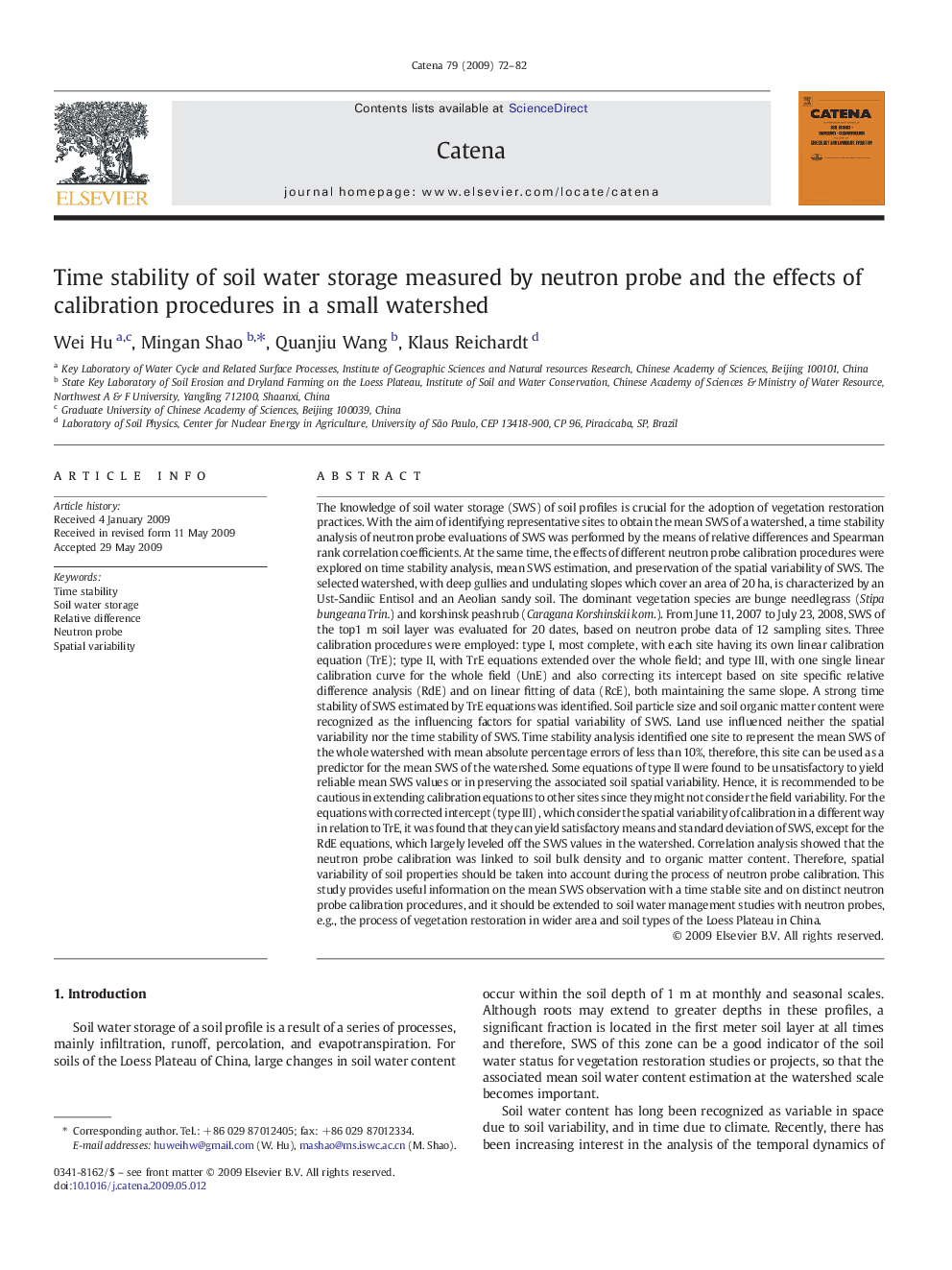| کد مقاله | کد نشریه | سال انتشار | مقاله انگلیسی | نسخه تمام متن |
|---|---|---|---|---|
| 4572378 | 1332172 | 2009 | 11 صفحه PDF | دانلود رایگان |

The knowledge of soil water storage (SWS) of soil profiles is crucial for the adoption of vegetation restoration practices. With the aim of identifying representative sites to obtain the mean SWS of a watershed, a time stability analysis of neutron probe evaluations of SWS was performed by the means of relative differences and Spearman rank correlation coefficients. At the same time, the effects of different neutron probe calibration procedures were explored on time stability analysis, mean SWS estimation, and preservation of the spatial variability of SWS. The selected watershed, with deep gullies and undulating slopes which cover an area of 20 ha, is characterized by an Ust-Sandiic Entisol and an Aeolian sandy soil. The dominant vegetation species are bunge needlegrass (Stipa bungeana Trin.) and korshinsk peashrub (Caragana Korshinskii kom.). From June 11, 2007 to July 23, 2008, SWS of the top1 m soil layer was evaluated for 20 dates, based on neutron probe data of 12 sampling sites. Three calibration procedures were employed: type I, most complete, with each site having its own linear calibration equation (TrE); type II, with TrE equations extended over the whole field; and type III, with one single linear calibration curve for the whole field (UnE) and also correcting its intercept based on site specific relative difference analysis (RdE) and on linear fitting of data (RcE), both maintaining the same slope. A strong time stability of SWS estimated by TrE equations was identified. Soil particle size and soil organic matter content were recognized as the influencing factors for spatial variability of SWS. Land use influenced neither the spatial variability nor the time stability of SWS. Time stability analysis identified one site to represent the mean SWS of the whole watershed with mean absolute percentage errors of less than 10%, therefore, this site can be used as a predictor for the mean SWS of the watershed. Some equations of type II were found to be unsatisfactory to yield reliable mean SWS values or in preserving the associated soil spatial variability. Hence, it is recommended to be cautious in extending calibration equations to other sites since they might not consider the field variability. For the equations with corrected intercept (type III) , which consider the spatial variability of calibration in a different way in relation to TrE, it was found that they can yield satisfactory means and standard deviation of SWS, except for the RdE equations, which largely leveled off the SWS values in the watershed. Correlation analysis showed that the neutron probe calibration was linked to soil bulk density and to organic matter content. Therefore, spatial variability of soil properties should be taken into account during the process of neutron probe calibration. This study provides useful information on the mean SWS observation with a time stable site and on distinct neutron probe calibration procedures, and it should be extended to soil water management studies with neutron probes, e.g., the process of vegetation restoration in wider area and soil types of the Loess Plateau in China.
Journal: CATENA - Volume 79, Issue 1, 15 October 2009, Pages 72–82